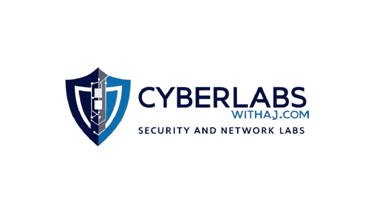Top Cloud Security Threats in 2025 & How to Defend Against Them
Explore the top cloud security threats in 2025 and discover actionable strategies to protect your infrastructure, data, and users in a rapidly evolving digital landscape.
BOLGS


Introduction: Cloud Is the New Battleground
As organizations continue their shift to the cloud in 2025, cyber threats have also evolved to target this expanding surface. While cloud platforms offer flexibility and scalability, they also introduce unique vulnerabilities that traditional on-premise systems didn’t face.
Whether you're a startup using SaaS or an enterprise running multi-cloud environments, understanding these threats — and knowing how to defend against them — is critical.
⚠️ Top Cloud Security Threats in 2025
1. Misconfigured Cloud Settings
Misconfigurations remain the #1 cause of cloud data breaches.
🔍 Example: An exposed S3 bucket or overly permissive IAM roles.
Defense:
Use automated configuration scanners like Prowler, ScoutSuite
Apply least privilege principle to all access
Regular audits using CSPM (Cloud Security Posture Management) tools
2. Insider Threats
Employees or contractors with access can intentionally or accidentally leak data.
🧑💼 Example: An ex-employee still has access to critical data post-exit.
Defense:
Enable zero trust policies
Use User Behavior Analytics (UBA)
Automate offboarding workflows
3. Insecure APIs
Public-facing APIs can be exploited to gain backend access.
🔐 Example: An unthrottled API without authentication layers.
Defense:
Use API gateways with authentication
Implement rate-limiting & logging
Conduct regular API pen testing
4. Data Breaches Due to Shared Responsibility Confusion
Many businesses assume the cloud provider handles all security — but that’s not the case.
☁️ Reminder: The cloud provider secures the infrastructure, but you’re responsible for securing your data and configurations.
Defense:
Educate teams on the shared responsibility model
Define clear internal security roles
Review provider-specific security documentation
5. Shadow IT & Unapproved Cloud Apps
Employees using unvetted SaaS tools pose compliance and visibility risks.
Defense:
Deploy Cloud Access Security Brokers (CASB)
Monitor traffic to identify unknown tools
Conduct security awareness training
6. Ransomware-as-a-Service (RaaS) in Cloud Environments
Ransomware has evolved — now targeting backups, SaaS storage, and cloud-hosted servers.
Defense:
Isolate critical backups
Enable immutable storage features
Use cloud-native endpoint detection & response (EDR) tools
7. Lack of Multi-Factor Authentication (MFA)
Weak authentication is still a widespread issue in 2025.
Defense:
Enforce MFA for all cloud users
Use context-aware logins (e.g., geo-location, device recognition)
Integrate identity platforms like Azure Entra ID / Okta
🛡️ Best Practices to Strengthen Cloud Security in 2025
✅ Adopt Zero Trust Architecture
✅ Use IAM with granular policies
✅ Enable real-time monitoring & alerts
✅ Run frequent cloud penetration tests
✅ Stay compliant with frameworks like ISO 27017, CIS, and NIST
🚀 Cloud Security Tools to Explore in 2025
ToolPurposeWiz.ioAgentless cloud security scanningPalo Alto Prisma CloudFull-stack cloud workload protectionAWS GuardDutyThreat detection for AWS environmentsMicrosoft Defender for CloudCSPM + threat analyticsCheck Point CloudGuardPolicy enforcement and compliance
✅ Conclusion: Secure the Cloud, Secure the Future
Cloud computing is here to stay — and so are the threats that come with it. But with the right mindset, tools, and policies, you can build a secure, scalable, and resilient cloud infrastructure in 2025.
Don’t just move to the cloud — move securely.
